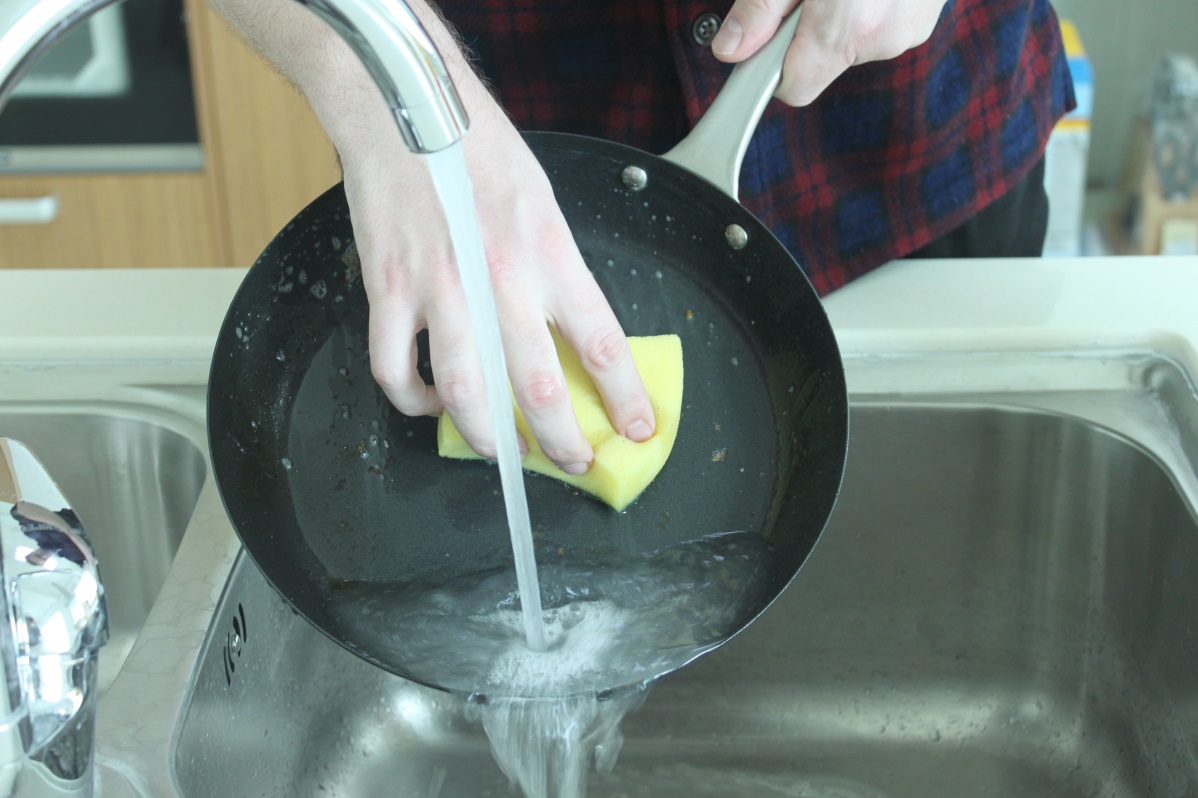One of the significant benefits of a Lotus Rock pan is its special suitability for high heat cooking. Unlike a general non-stick pan, a Lotus Rock pan is excellent for pan-frying, grilling, stir frying, and sautéing on a high heat to develop a delicious, brown crust on meat, fish and vegetables.
However, for some popular dishes such as scrambled eggs, the browning reaction is exactly what you do not want. If scrambled eggs are cooked this way then they will be tough and rubbery, rather than soft or fluffy. So since the Lotus Rock material construction is highly suitable for high heat cooking, does that make it impractical for the type of low temperature cooking that is needed for scrambled eggs?
The straight answer to this question is an emphatic no, but in order to cook soft and fluffy scrambled eggs with a Lotus Rock pan a different type of cooking approach is needed. In fact, it is necessary to think more like a professional chef. In a restaurant kitchen, time and efficiency are of the utmost importance. It is for this reason that professional chefs often develop cooking techniques that make it possible to create some popular, well-known dishes in half the normal time, yet which taste just as good or, because of higher moisture or vitamin retention, even more delicious or healthy.
Currently one of the most famous professional chefs around is Gordon Ramsey, the presenter of the popular television series Kitchen Nightmares. In this video clip Gordon decides to cook a delicious breakfast for his wife who is still in bed upstairs. However, just like all professional chefs, he wants to cook the scrambled eggs quickly, partly to save time, partly so it can be eaten while still warm with sautéed mushrooms, tomatoes, and toasted bread. So rather than just use the standard cooking technique for scrambled eggs, which would be to use an aluminum non-stick coated frying pan to cook the eggs slowly until they form curds, he develops a different approach. Not only does he use a different material for the pan, stainless steel, but instead of just leaving it on the stove, he continually moves the pan to the counter top and back to the heated stove, stirring the eggs thoroughly throughout. The advantage of not heating the eggs continually is that they do not get over-cooked and tough. At the same time the high heat retention of stainless steel means that the pan does not get too cold while it is on the counter top, and so there is a reduced chance that the eggs will uncurdle and break up.
 When cooking scrambled eggs with a Lotus Rock pan it would be advisable not to copy Gordon Ramsey’s cooking technique in its entirety because, although carbon steel, the substrate of all Lotus Rock pans, does have similar heat retention qualities to stainless steel, it also has a different rate of heat conductivity, which requires his technique to be modified slightly. Before adding any ingredients, pre-heat the pan at a very low temperature to allow the heat to be absorbed into its highly dense structure. Then turn the heat off and leave the pan to cool for about 10 seconds before adding the egg mixture, using a spatula to keep moving it from the outer part of the pan to the centre to allow as much of the mixture to cook evenly as possible. If during cooking you feel the pan has cooled down too much and the eggs are not coagulating as they should, return the pan to the stove to add some extra heat.
When cooking scrambled eggs with a Lotus Rock pan it would be advisable not to copy Gordon Ramsey’s cooking technique in its entirety because, although carbon steel, the substrate of all Lotus Rock pans, does have similar heat retention qualities to stainless steel, it also has a different rate of heat conductivity, which requires his technique to be modified slightly. Before adding any ingredients, pre-heat the pan at a very low temperature to allow the heat to be absorbed into its highly dense structure. Then turn the heat off and leave the pan to cool for about 10 seconds before adding the egg mixture, using a spatula to keep moving it from the outer part of the pan to the centre to allow as much of the mixture to cook evenly as possible. If during cooking you feel the pan has cooled down too much and the eggs are not coagulating as they should, return the pan to the stove to add some extra heat.
Another way to prevent overcooking is to add milk or sour cream to the eggs when whisking them together. Or alternatively, copy the Gordon Ramsey approach and add crème fraiche towards the end of the cooking to help cool the temperature of the eggs down.
So in conclusion, scrambled eggs can be cooked to perfection by removing a Lotus Rock pan from the heat source before adding the egg mixture, and by including another ingredient such as milk to slow the cooking process down. These soft and fluffy scrambled eggs can then be added to other ingredients for the perfect breakfast or entrée.









